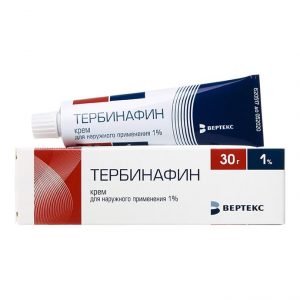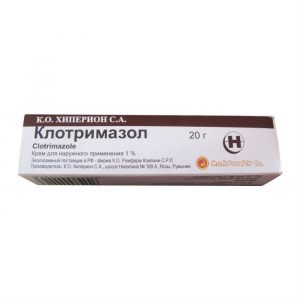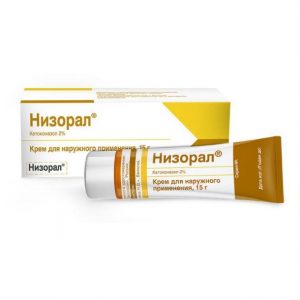Description
Release form
Capsules
Packing
1 pc
Indications
cryptococcosis, including cryptococcal meningitis and other localizations of this infection (including lungs, skin), both in patients with a normal immune response and in patients with various forms of immunosuppression (including in patients with AIDS, with organ transplantation) can be used to prevent cryptococcal infection in AIDS patients with
generalized candidiasis, including candidaemia, disseminated candidiasis and other forms of invasive candidiasis infections (infections of the peritoneum, endocardium, eyes, respiratory and urinary tracts). Treatment can be carried out in patients with malignant neoplasms, patients in the intensive care unit, patients undergoing a course of cytostatic or immunosuppressive therapy, as well as in the presence of other factors predisposing to the development of candidiasis
candidiasis of the mucous membranes, including the oral cavity and pharynx (including atrophic candidiasis of the oral cavity associated with wearing dentures), the esophagus, non-invasive bronchopulmonary candidiasis, candiduria, skin candidiasis prevention of recurrence of oropharyngeal candidiasis in AIDS patients
genital candidiasis: vaginal candidiasis (acute and chronic relapsing) in order to reduce the recurrence rate of vaginal candidiasis (3 or more episodes per year) candidal balanitis
prevention of fungal infections in patients with malignant new formations that are predisposed to such infections as a result of chemotherapy with cytostatics or radiation therapy for
mycosis of the skin, including mycosis of the feet, body, inguinal area, pityriasis versicolor, onychomycosis candidiasis of the skin
deep endemic mycoses, including coccidioidomycosis, paracoccidiomycosis, sporotrichosis and histoplasmosis in patients with normal immunity.
Contraindications
hypersensitivity to the drug (including a history of other azole antifungal drugs)
simultaneous administration of terfenadine (against the background of continuous administration of fluconazole at a dose of 400 mg / day or more) or astemizole, as well as other long-term medications QT
children under 4 years old.
Precautions: liver and / or renal failure, rash on the background of fluconazole in patients with superficial fungal infection and invasive / systemic fungal infections, concomitant use of terfenadine and fluconazole in a dose of less than 400 mg / day, concomitant use of potentially hepatotoxic drugs, alcoholism potentially proarrhythmogenic conditions in patients with multiple risk factors (organic heart disease, electrolyte imbalance, concomitant use of drugs causing arrhythmias), pregnancy.
Use during pregnancy and lactation
The use of the drug in pregnant women is impractical, except for severe or life-threatening forms of fungal infections, when the potential benefits of using fluconazole for the mother significantly exceed the risk to the fetus.
Since the concentration of fluconazole in breast milk and plasma is the same, it is contraindicated to use the drug during lactation.
Ingredients
1 capsule contains:
Active ingredient:
fluconazole 150 mg
Excipients:
lactose monohydrate
starch pregelatinized
silicon dioxide sulfide sodium colloidal acid
Side effects of the
From the digestive system: decreased appetite, taste changes, abdominal pain, vomiting, nausea, diarrhea, flatulence, rarely – impaired liver function (jaundice, hepatitis, hepatonecrosis, hyperbilirubinemia, increased activity of alanine aminotransferase, alkaline phosphatase, hepatocellular necrosis), including heavy.
From the nervous system: headache, dizziness, excessive fatigue, rarely – cramps.
From the hemopoietic organs: rarely – leukopenia, thrombocytopenia (bleeding, petechiae), neutropenia, agranulocytosis.
Allergic reactions: skin rash, rarely erythema multiforme exudative (including Stevens-Johnson syndrome), toxic epidermal necrolysis (Lyell’s syndrome), anaphylactoid reactions (including angioedema, swelling of the face, urticaria, pruritus )
From the cardiovascular system: an increase in the duration of the QT interval, ventricular fibrillation / flutter.
Other: rarely – impaired renal function, alopecia, hypercholesterolemia, hypertriglyceridemia, hypokalemia.
Drug Interaction
When fluconazole is used with warfarin, PV is increased (by 12% on average). In this regard, it is recommended to carefully monitor the parameters of PV in patients receiving the drug in combination with coumarin anticoagulants.
Fluconazole increases the plasma half-life of oral hypoglycemic agents – sulfonylurea (chlorpropamide, glibenclamide, glipizide, tolbutamide) derivatives in healthy people. Co-administration of fluconazole and oral hypoglycemic agents in patients with diabetes is allowed, however, your doctor should keep in mind the possibility of developing hypoglycemia.
Concomitant administration of Fluconazole and phenytoin may increase the plasma phenytoin concentration to a clinically relevant level. Therefore, if necessary, the co-administration of these drugs should monitor the concentration of phenytoin with dose adjustment in order to maintain the drug level within the therapeutic interval.
Combination with rifampicin results in a 25% decrease in AUC and a 20% reduction in the plasma half-life of fluconazole. Therefore, it is advisable to increase the dose of Fluconazole in patients receiving concomitant rifampicin.
It is recommended that blood levels of cyclosporine be monitored in patients receiving fluconazole, as they should be controlled. the use of fluconazole and cyclosporine in patients with a transplanted kidney (administration of Fluconazole at a dose of 200 mg / day) leads to a slow increase in the concentration of cyclosporine in plasma.
Patients receiving high doses of theophylline or who are likely to develop theophylline intoxication should be monitored for early detection of symptoms of theophylline overdose. fluconazole administration results in a decrease in the average clearance rate of theophylline from plasma.
When fluconazole is co-administered with terfenadine and cisapride, cardiac adverse events, including ventricular tachycardia (torsades de points), have been reported.
Concomitant administration of fluconazole and hydrochlorothiazide may increase plasma concentrations of fluconazole by 40%.
Fluconazole and rifabutin have been reported to be associated with increased serum levels of the latter. When fluconazole and rifabutin are co-administered, cases of uveitis have been reported. Patients receiving rifabutin and fluconazole should be closely monitored.
In patients receiving a combination of fluconazole and zidovudine, an increase in zidovudine is observed, which is caused by a decrease in the latter’s metabolism into its major metabolite, therefore, an increase in the side effects of zidovudine should be expected.
Increases the concentration of midazolam, which raises the risk of developing psychomotor effects (most pronounced when using fluconazole orally, rather than IV).
Increases tacrolimus concentration, thereby increasing the risk of nephrotoxicity.
Overdose
Symptoms: hallucinations, paranoid behavior.
Treatment: symptomatic – gastric lavage, forced diuresis. Hemodialysis reduces plasma concentrations by about 50% for 3 hours.
Storage conditions
In a dry, dark place at a temperature of 15 25 ° C.
Deystvuyuschee substances
Fluconazole
Dosage form
Dosage form
capsules
Vertex, Russia




